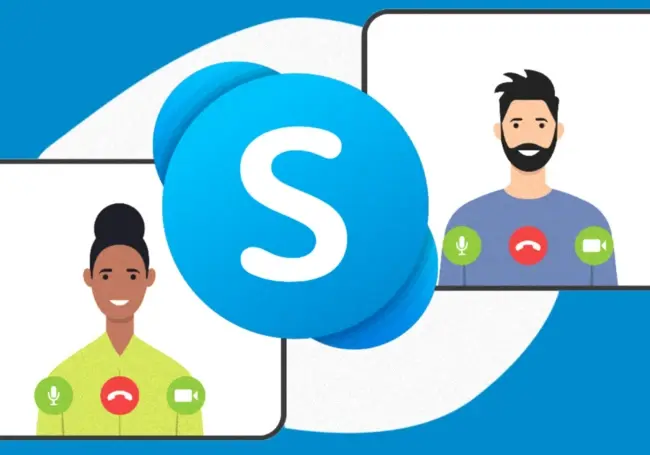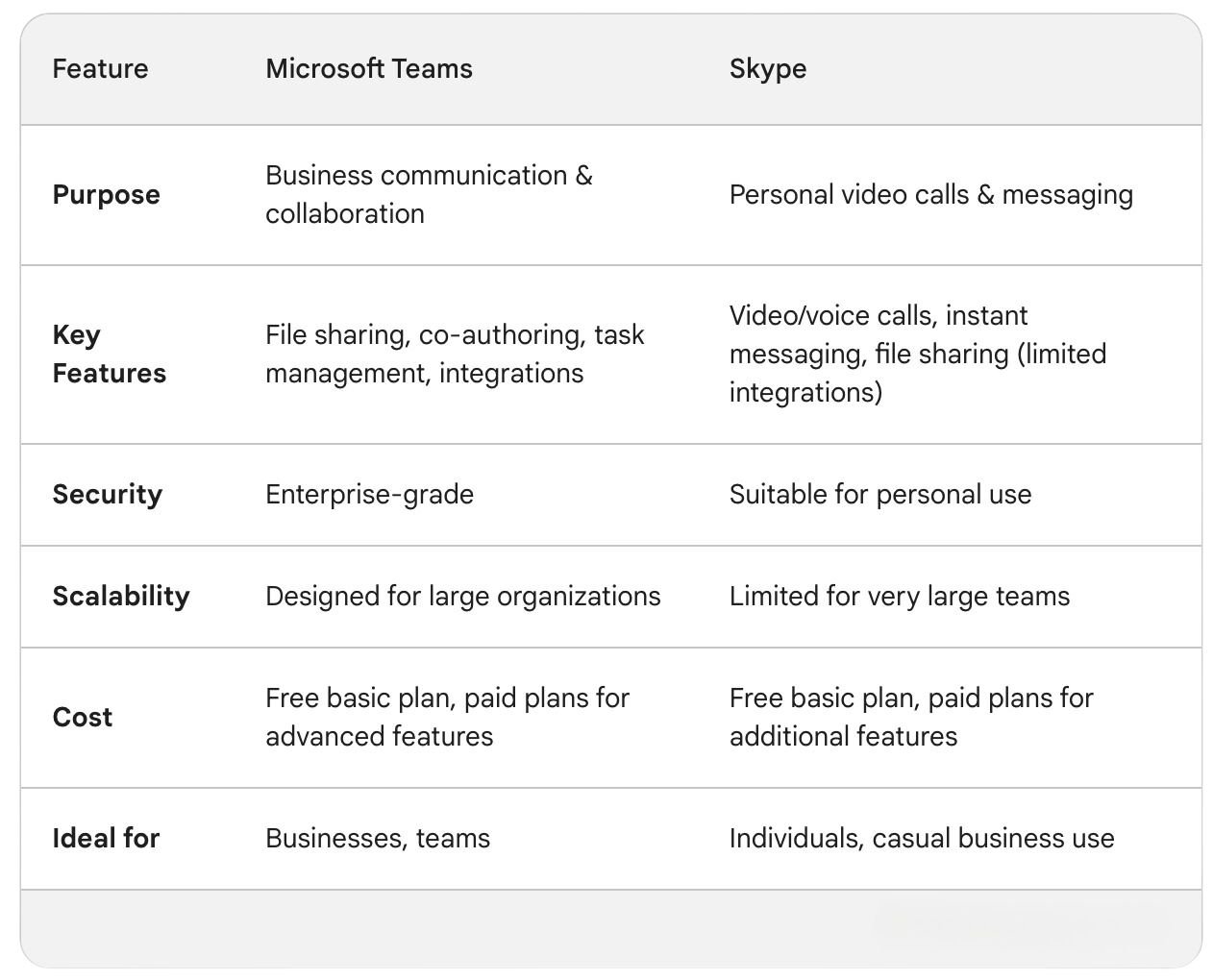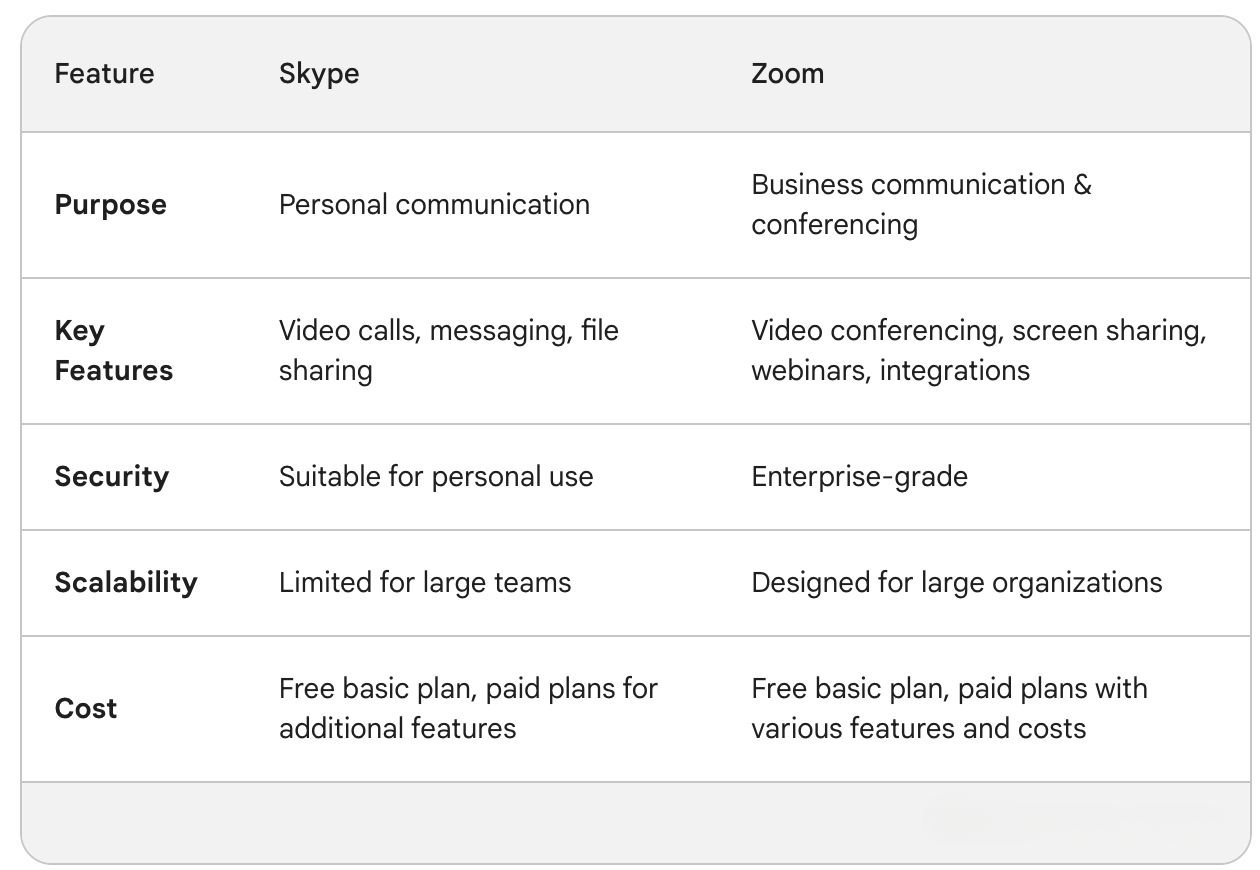Once a revolutionary platform, Skype was synonymous with video calls for over a decade. But how did this software go from a household name, only to fade into the background seemingly overnight?
In this article we will explore what happened to Skype, its competitors including Zoom and if Skype still exists.

What is Skype?
Skype is a software program that lets you make video calls, voice calls, and instant message with other people over the internet.
As well as free video and voice calls Skype also allows users to make paid calls to landlines and mobiles.
Since May 2011, Microsoft has owned Skype. They acquired Skype Technologies, the company behind the software, for $8.5 billion. Since then, Skype has operated as a division of Microsoft.
What happened to Skype?
Skype's rise was meteoric. Before the days of FaceTime, leveraging peer-to-peer technology to offer free and clear video calling was a real novelty.
This innovation shattered geographical barriers, allowing friends and families across the globe to connect face-to-face for the first time.
One of Skype's strengths throughout its journey has been its cross-platform availability. It wasn't confined to desktops; users could connect on laptops, tablets, and even mobile phones. This flexibility made Skype accessible for a wider audience, allowing people to stay connected on the go.
Founded in 2002, Skype quickly captured the world's attention, amassing an estimated 300 million users worldwide.
In 2005, eBay, a leading online auction platform, made a surprising move by acquiring Skype for a $2.6 billion. The reasoning behind the acquisition wasn't entirely clear. Some speculated that eBay envisioned integrating Skype's communication tools into their marketplace platform, potentially allowing buyers and sellers to connect directly through video calls.
eBay struggled to effectively integrate Skype into its existing business model, users saw little value in video communication for online auctions, and the integration felt clunky. In 2009 eBay sold a majority stake in Skype to an investor group led by private equity firm Silver Lake. The deal valued Skype at $2.75 billion, higher than what eBay had paid four years prior.
In 2011, Microsoft acquired Skype for a massive $8.5 billion. The promised integration with Microsoft products and wider reach, however, integration efforts were slow, and some argue that Microsoft's focus shifted from core functionality to unnecessary features, bloating the software.
By the mid 2010’s Skype was no longer the only video call software in the game. Zoom, with its sleek interface and focus on business features, became a favorite for video conferencing. Google Meet, with its seamless integration with Gmail, offered a convenient option for many.
Meanwhile, the biggest threat materialised from within Microsoft's own ecosystem- Teams.
Skype vs Teams
Launched in 2015, Skype for Business offered features geared towards business communication and collaboration, competing with services like Zoom and Google Meet. However, Microsoft decided to focus on a unified communication platform, Microsoft Teams.
Microsoft Teams launched in 2016 and was specifically designed with businesses in mind. It offered features beyond Skype's capabilities, including file collaboration and real-time document editing.
With integration with the entire Office suite as well as security and scalability built for large organizations- Teams rapidly gained traction, pulling users away from Skype.
To encourage migration to Teams, Microsoft ended support for Skype for Business online in July 2021. On-premises versions still exist with a paid subscription, but Microsoft doesn't actively develop them anymore.

Skype vs Zoom
Though Skype's user base did grow during the pandemic, it was nothing compared to the explosive rise of Zoom.
Zoom emerged with features specifically designed for video conferencing, such as screen sharing, breakout rooms, and better security options for large meetings. These features became crucial for businesses and remote learning during the pandemic.
While Skype offered some integrations, Zoom boasted seamless integration with popular productivity and communication tools used during the pandemic, streamlining remote workflows
Read: Zoom: Businesses Warned That Lack of Flexibility Could Lead to Employee Turnover
While core video calling remained free, some features crucial during the pandemic, like screen sharing for large calls, required paid subscriptions in Skype, whereas Zoom offered them in free plans.
Whilst Skype’s security features were suitable for personal use, they didn’t meet the stricter requirements of businesses, especially for handling sensitive information. Zoom on the other hand offered enterprise-grade security features and was designed to scale for large organizations. Paid plans include additional security features like data encryption and HIPAA compliance.

Does Skype Still Exist?
In February 2025 Microsoft announced that Skype will no longer exist as of May 2025,
Microsoft, who owns Skype, has shifted its focus towards promoting Microsoft Teams for business communication.
The tech giant will allow Skype users to log into teams with their existing Skype credentials to help with a seamless transition. Existing chats and contacts will also be automatically migrated.
If you would prefer not to use Teams you are also able to export all your Skype data, including chats, contacts and call history before the platform is deleted.







Comments ( 0 )